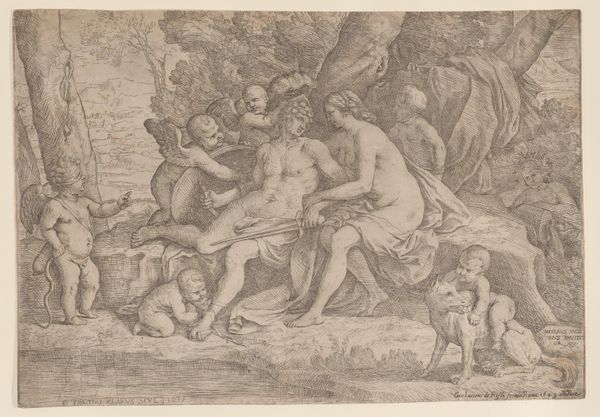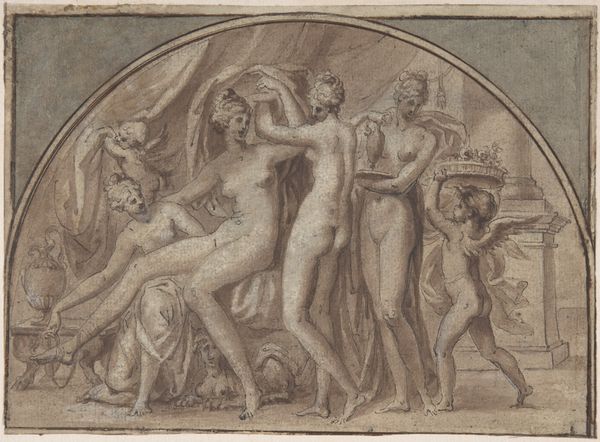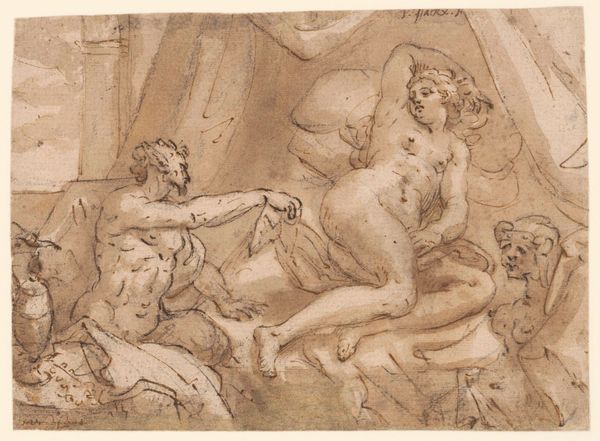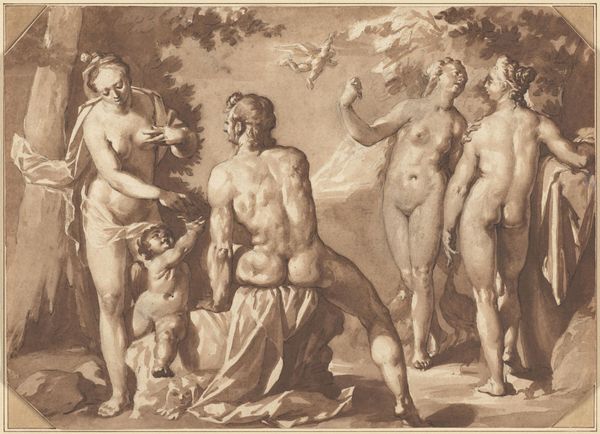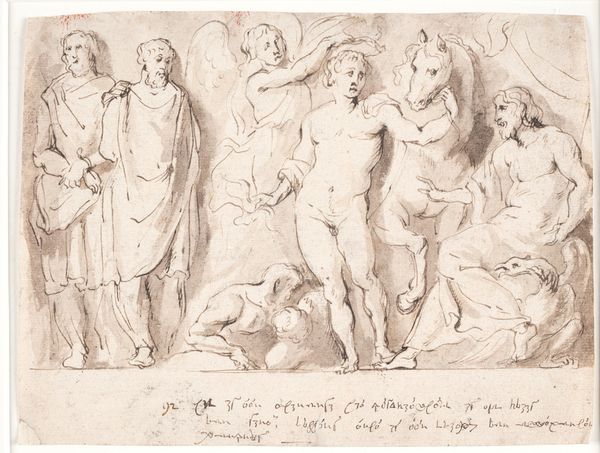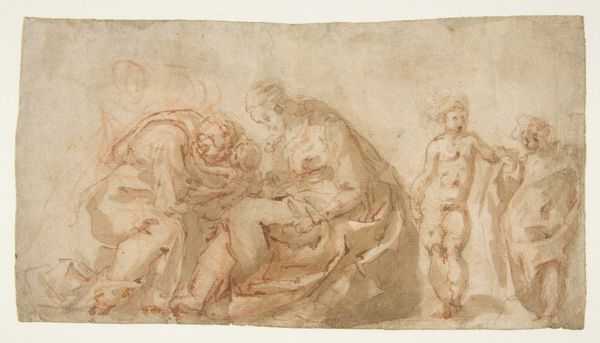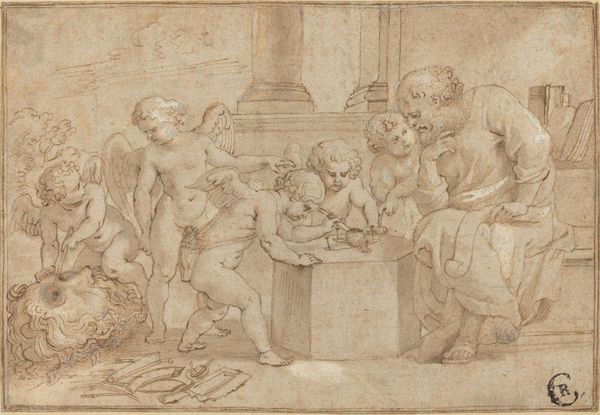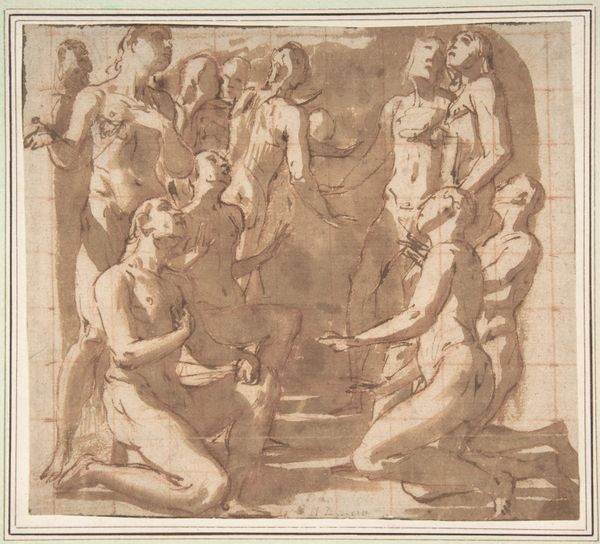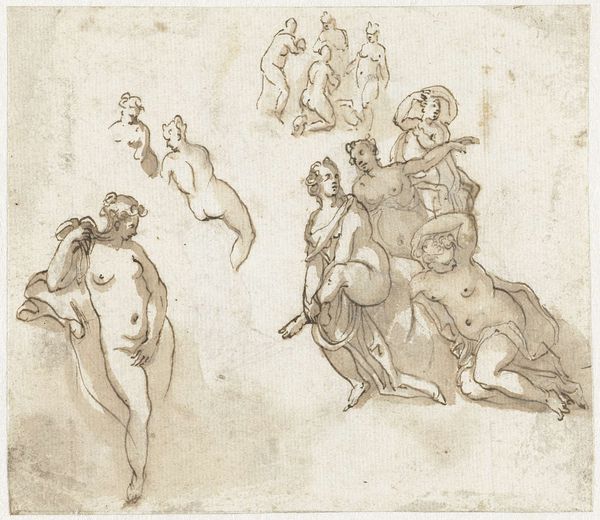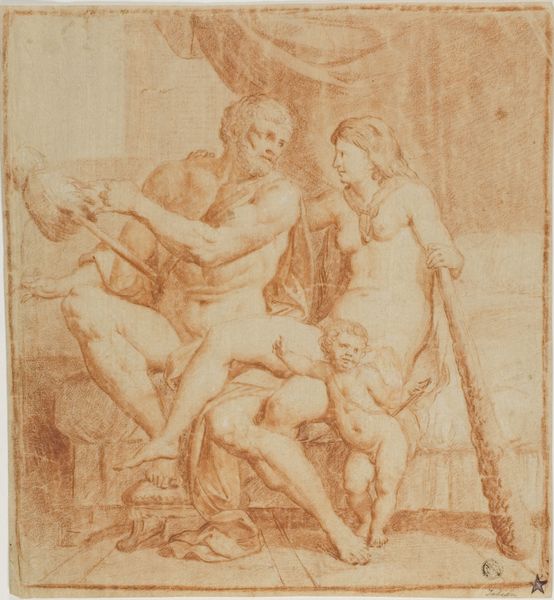
drawing, charcoal
#
drawing
#
allegory
#
charcoal drawing
#
figuration
#
11_renaissance
#
charcoal
#
history-painting
#
northern-renaissance
#
academic-art
#
charcoal
Dimensions: height 120 mm, width 177 mm
Copyright: Rijks Museum: Open Domain
Curator: Here we have “The Consequences of Dealing with Bacchus and Venus,” a work rendered in charcoal, dating from 1566 to 1629, and attributed to Otto van Veen. It’s currently held here at the Rijksmuseum. Editor: Immediately, I'm struck by its rather somber tone. The figures seem draped in a pall of… exhaustion? The textures, while beautiful in the rendering of flesh, convey a sense of depletion, don’t you think? Curator: It is intended to be a cautionary tale. Van Veen, a pivotal figure in the Northern Renaissance and Rubens' teacher, often used allegories steeped in classical imagery to impart moral lessons relevant to his contemporary audience. The drawing highlights, of course, the dangers associated with indulging in earthly pleasures symbolized by Bacchus and Venus. We must ask: Who was this moralizing for? Editor: Yes, exactly! Looking at this now, through a modern lens, it's easy to read the artist's positioning within existing patriarchal structures. Is it warning people off sensual pursuits, or more specifically regulating the actions, specifically of women, by placing them in these binary frameworks? How does this drawing perform that control? Curator: Undoubtedly, such questions are pivotal for any contemporary critical engagement. The iconography does invite scrutiny from multiple perspectives. Look at the depiction of illness on the right, contrasting with Bacchus and Venus. It reflects anxieties present at the time. Syphilis, for instance, ravaged Europe during that period, with direct associations with loose morality, prostitution, and brothels. Editor: It is a direct equation, then—pleasure equates disease, the moral framework clearly visible. Thinking about its display in this space today, do you believe our framing of such images has sufficiently adapted to consider the complexities inherent to the representation of gender and sexuality here? How can we actively provide a nuanced, modern perspective on its themes to offer context in addition to didactic moralizing? Curator: That's the perpetual challenge. Placing the drawing within the context of its creation is key; however, doing that alongside fostering critical interpretations—from feminist or postcolonial perspectives, for instance—is vital to ensuring this object remains relevant within contemporary discourse and doesn’t merely serve to reinforce problematic ideologies. Editor: Absolutely, by interrogating those inherent biases, the work has potential as a site of critical discussion. Rather than a straightforward moral lesson, the drawing becomes a point of departure, a conversation. Curator: I concur. Its worth transcends that initial didactic function as long as we're open to considering the social implications interwoven within every brushstroke.
Comments
No comments
Be the first to comment and join the conversation on the ultimate creative platform.


